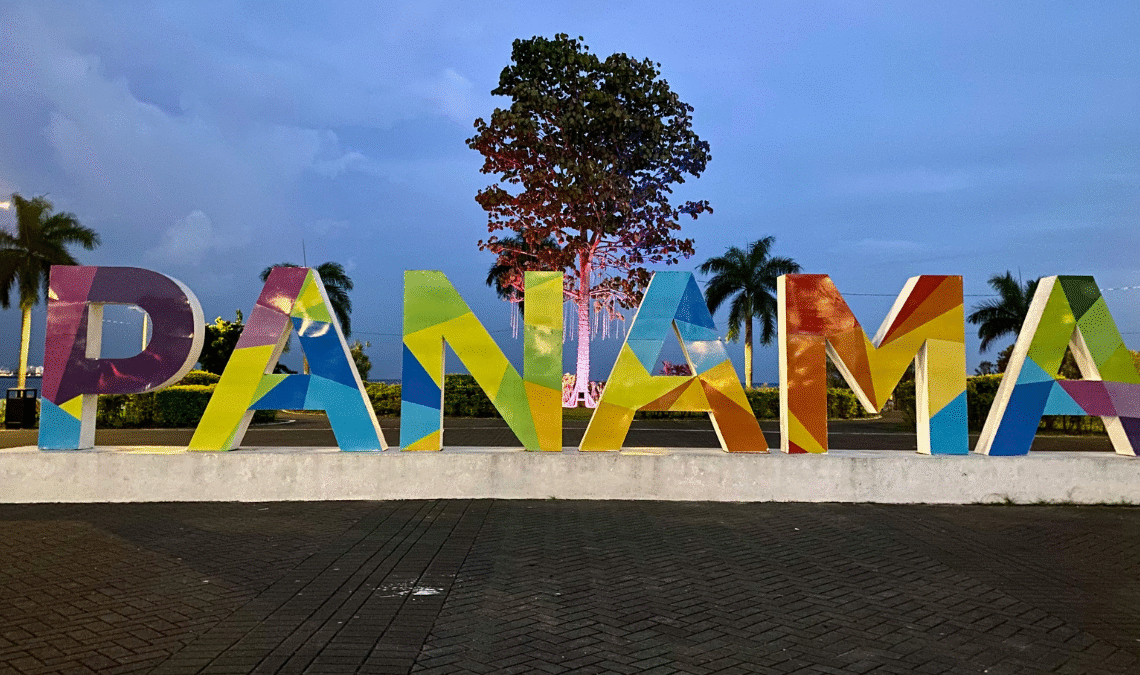Panama is a small but diverse country in Central America, best known for the iconic Panama Canal, which links the Atlantic and Pacific Oceans. But beyond its famous waterway, Panama offers a rich mix of tropical nature, modern cities, indigenous culture, and coastal beauty. With lush rainforests, mountain retreats, and over 1,500 islands, it attracts travelers looking for both adventure and relaxation. Its strategic location, warm climate, and blend of old-world charm and modern infrastructure make it a rising favorite among tourists, expats, and snowbirds alike.
Panama, located in Central America, offers a unique blend of cultural diversity, tropical climate, and modern amenities.
Required Documents: For a 3-4 month stay in Panama.
Passport: A valid Canadian passport is essential, and it must be valid for at least six months after your intended date of entry into Panama.
Visa: As of 2024, Canadian citizens can enter Panama for tourism purposes without a visa for stays up to 180 days.
Proof of onward/return travel: You’ll need to show proof of a return ticket or onward travel plans to leave Panama.
Proof of economic solvency:
You should have proof of sufficient funds to support your stay, such as cash, credit cards, bank statements, or a letter of employment
Canadian snowbirds, who typically seek warm, sunny climates to escape the harsh winters, tend to prefer areas in Panama that offer a combination of pleasant weather, a comfortable lifestyle, and good amenities. Based on those preferences, here are the most popular locations for Canadian snowbirds in Panama:
1. Boquete
Climate: Boquete offers a cooler, spring-like climate due to its highland location. While the rest of Panama experiences tropical heat, Boquete stays mild with average temperatures between 65°F and 75°F (18°C to 24°C). This is a big draw for Canadians looking to avoid both extreme heat and cold.
Lifestyle: It’s a peaceful, relaxed town with a focus on nature, making it perfect for those seeking a slower pace of life. The area offers outdoor activities like hiking, birdwatching, and visits to coffee plantations.
Community: Boquete has a strong expat community, including many Canadians, which provides social support and familiarity.
2. Coronado
Climate: Located on the Pacific coast, Coronado offers a warm beach climate, with temperatures ranging from 75°F to 90°F (24°C to 32°C) year-round. It’s sunny, with a dry season that attracts snowbirds during the winter months.
Lifestyle: Coronado has all the amenities of a small town with a beach lifestyle, such as restaurants, grocery stores, golf courses, and proximity to Panama City for larger shopping and medical needs. The area has a large expat population, which makes it easier for Canadians to settle in and connect.
Proximity to Panama City: It’s only about 1.5 hours from Panama City, making it a convenient location for those who like a mix of beach relaxation and access to a major city.
3. Panama City
Climate: While Panama City can be hot and humid, the city is more developed and offers more urban amenities compared to other areas. Many snowbirds opt for this location due to its modern infrastructure, shopping, and dining options.
Lifestyle: Panama City has an exciting cosmopolitan vibe, with everything from cultural events and museums to international dining options. Snowbirds who want the convenience of city life while enjoying warm weather prefer Panama City.
Convenience: For those looking for easy access to flights back home, Panama City offers a major international airport. It’s also a hub for healthcare, which can be a deciding factor for many.
4. David
Climate: David is located in the Chiriquí province, and while it is warmer than Boquete, it still enjoys a relatively mild climate compared to other areas in Panama. Temperatures here range from 70°F to 85°F (21°C to 29°C).
Lifestyle: It’s a less touristy city, providing a more authentic Panamanian experience. David is perfect for those who want to experience more of the local culture while still having easy access to modern amenities.
Affordability: The cost of living in David is significantly lower than in Panama City or Coronado, making it an attractive option for snowbirds on a budget.
5. Pedasi
Climate: Pedasi is located on the Azuero Peninsula, which has a dry season during the winter months, making it a comfortable destination for snowbirds. It’s warm but not excessively hot, with temperatures ranging from 75°F to 85°F (24°C to 29°C).
Lifestyle: It offers a laid-back, village atmosphere with access to beautiful beaches. It’s perfect for those seeking a slower, more tranquil lifestyle.
Community: Pedasi is an emerging destination for expats, particularly from North America, making it ideal for snowbirds who want a small-town feel with a strong expat presence.
6. Bocas del Toro
Climate: Located on the Caribbean coast, Bocas del Toro is warm and tropical, with temperatures typically ranging from 75°F to 88°F (24°C to 31°C). While it experiences more rainfall than the Pacific side, it still offers a very pleasant environment, especially during the dry season from December to April.
Lifestyle: Known for its laid-back island atmosphere, Bocas del Toro appeals to snowbirds seeking an easy-going, nature-focused lifestyle with activities like snorkelling, diving, and island hopping.
Community: The expat community is growing, and many Canadians enjoy the sense of community and the slower pace of life here.
Overall Preference:
Canadian snowbirds are likely to prefer Boquete and Coronado for their balance of comfortable weather, good amenities, and expat communities. Boquete offers a cooler climate in the mountains, while Coronado provides a more beach-centric, warmer environment. Both locations allow snowbirds to enjoy Panama’s tropical beauty while still maintaining access to modern comforts and social opportunities.
Weather by Season :
Dry Season (December to April):
Temperature: Average temperatures range from 24°C to 30°C (75°F to 86°F) across the country. Coastal areas may experience higher temperatures.
Conditions: This period is characterized by minimal rainfall, especially in the Pacific regions, making it ideal for outdoor activities and beach visits.
Rainy Season (May to November):
Temperature: Similar to the dry season, with average temperatures between 24°C to 30°C (75°F to 86°F).
Conditions: Increased rainfall, particularly in the afternoons, leading to lush greenery but potential disruptions for outdoor plans.
National Language:
Spanish is the official language of Panama. While English is commonly understood in urban areas and tourist destinations, learning basic Spanish phrases can enhance your experience and interactions with locals.
Religion:
The majority of Panamanians identify as Roman Catholic, followed by Protestant denominations. Religious freedom is constitutionally guaranteed, and various religious communities coexist peacefully.
Women:
Panama has made significant strides in promoting gender equality. Women actively participate in various sectors, including politics, business, and education. However, like many countries, challenges remain, and ongoing efforts aim to address them.
Vaccinations Required:
No specific vaccinations are mandatory for travellers from North America to Panama. However, it’s advisable to ensure routine vaccinations—such as measles, mumps, rubella (MMR), diphtheria, tetanus, and influenza—are up to date. Additionally, considering vaccines for hepatitis A and B, typhoid, and rabies may be prudent, depending on your travel plans and activities. It’s recommended to consult with a healthcare provider or travel clinic at least six to eight weeks before departure to receive any necessary vaccinations.
Common Illnesses:
Travellers may encounter common ailments such as food and waterborne illnesses, respiratory infections, and vector-borne diseases like malaria and dengue fever in certain regions. It’s advisable to practice regular hand hygiene, consume food from reputable sources, and take necessary precautions against insect bites, such as using mosquito repellent and sleeping under nets.
Crime Rate:
Panama is generally considered safe for tourists and residents. However, petty crimes like pickpocketing can occur, especially in tourist-heavy areas. It’s advisable to remain vigilant in crowded places and safeguard personal belongings. Notably, Panama City has been recognized for its balance of low living costs and high quality of life.
Food – National Dish/Type of Local Staple:
Panamanian cuisine is a fusion of Indigenous, African, and Spanish influences, with staples like:
Sancocho: A hearty chicken and vegetable stew considered a national dish.
Arroz con Pollo: A flavorful rice and chicken dish cooked with vegetables and spices.
Patacones: Fried green plantains, commonly served as a side dish or snack.
Cost of Living: Local Food, Foreign Imports:
Local Food: Eating at local markets and traditional restaurants is affordable. A typical meal can cost between $5 to $8USD.
Foreign Imports: Imported goods, including certain food items, are generally more expensive due to import taxes. Opting for local products is both economical and offers a more immersive cultural experience. Panama City, in particular, offers a balance of low living costs and high quality of life.
Accommodation – Rental, Airbnb, Costs:
Rental Costs: Accommodation prices vary by location and type. In Panama City, particularly in desirable areas like Costa del Este or Punta Pacifica, monthly rents for a one-bedroom apartment typically range from $800 to $1,500 USD, while three-bedroom apartments can cost $1,500 to $3,000 USD. In smaller cities and rural areas, costs can be significantly lower.
Airbnb: Short-term rentals are widely available, with prices varying based on location, season, and property amenities. It’s advisable to book in advance, especially during peak tourist seasons.
Things to Do for Those Staying 3-4 Months:
An extended stay in Panama offers numerous opportunities to immerse yourself in its culture and lifestyle:
Language Learning: Enroll in Spanish language courses to enhance communication and cultural understanding.
Culinary Exploration: Participate in cooking classes to learn traditional Panamanian recipes and cooking techniques.
Cultural Festivals: Experience local festivals such as Carnival, featuring vibrant parades, music, and dance.
Volunteer Opportunities: Engage in community service or environmental conservation projects to give back and connect with local communities.
Travel: Explore Panama’s diverse regions, from the historic Panama Canal and cosmopolitan Panama City to the serene beaches of Bocas del Toro and the highlands of Boquete.
Embracing Panama’s rich cultural heritage, diverse cuisine, and warm community will undoubtedly make your extended stay both enjoyable and enriching.
Are you still wondering if spending a winter away is a good idea? Check out Snowbird Adventures:Perks of Wintering in Warmer Climates for some of the benefits.
Other places to consider: Snowbirding Series: Costa Rica – Living the Pure Life
Snowboarding Series: Philippines
Sources: Business Insider+1GlobalPassport™+1
GlobalPassport™
yourpanama.com






